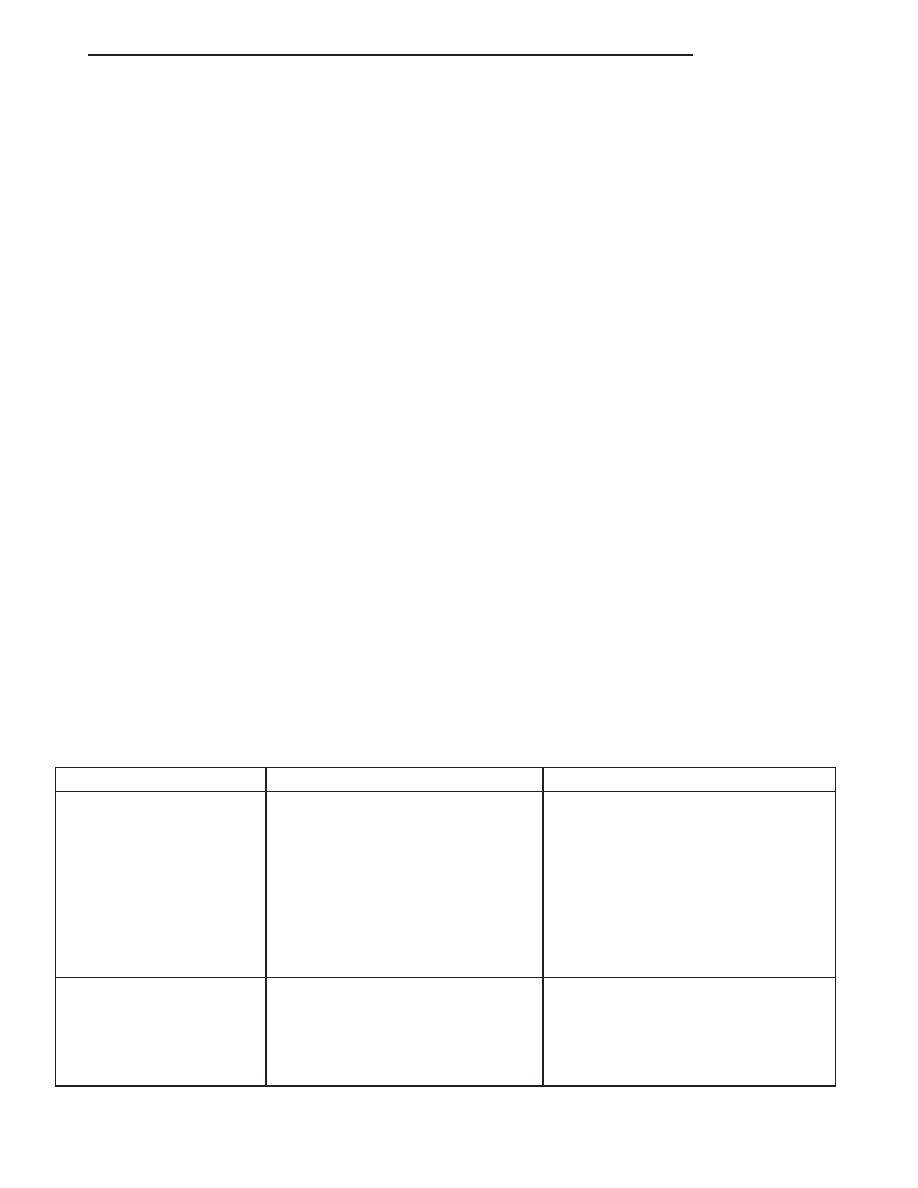Chrysler Pacifica. Manual - part 742

TEST PROCEDURE
(1) Completely open valve on Power Steering Ana-
lyzer flow meter.
(2) Start engine and let idle long enough to circu-
late power steering fluid through Analyzer and hoses,
until all air is out of fluid. Shut off engine.
(3) Check power steering fluid level and add fluid
as necessary. Start engine again and let idle.
(4) The Analyzer gauge should read below 300 psi
(2068 kPa). If above, inspect hoses for restrictions
and repair as necessary. The initial pressure should
be in range of 100–175 psi (689–1896 kPa). The flow
meter should read above 1.5 GPM (5.7 LPM).
CAUTION:
The
following
test
procedure
step
involves testing maximum pump pressure output
and flow control valve operation. Do not leave valve
closed for more than five seconds as the pump
could be damaged.
NOTE: Power steering pump maximum pressure is
1400 – 1,500 psi (9653 – 10,342 kPa).
(5) Close flow meter valve fully three times and
record highest pressure indicated each time. All
three readings must be within specifications. If
any of readings are not within specifications,
replace pump. (Refer to 19 - STEERING/PUMP -
REMOVAL)
CAUTION: During the next step, do not force the
pump to operate against the stops for more than 4
seconds at a time as pump damage may result.
(6) Once pump has been verified as functioning
correctly, completely open valve on Power Steering
Analyzer flow meter. Turn steering wheel to extreme
left until stop in steering gear is met. Hold it there
for 2 – 4 seconds, then release it. Now turn steering
wheel to right until right stop is met. Hold it there
for 2 – 4 seconds, then release it. Record stabilized
pressure at each position. Compare recorded readings
to specifications. If output pressures are not within
100 psi (689 kPa) of one another or are below speci-
fications steering gear is leaking internally and must
be replaced. (Refer to 19 - STEERING/GEAR -
REMOVAL)
NOTE: Before installing power steering hose on
power steering gear, wipe clean connections with a
lint-free cloth and replace O-ring. Lubricate O-ring
using clean power steering fluid.
(7) Remove special tools and reconnect pressure
hose. Tighten tube nut to specifications. (Refer to 19 -
STEERING - SPECIFICATIONS)
(8) Fill and bleed system using Power Steering
Pump Initial Operation Procedure. (Refer to 19 -
STEERING/PUMP - STANDARD PROCEDURE)
DIAGNOSIS AND TESTING - STEERING
SYSTEM DIAGNOSIS CHARTS
NOTE: There are three diagnosis charts following
that cover POWER STEERING NOISE, STEERING
WHEEL FEEL, and POWER STEERING FLUID.
POWER STEERING NOISE
CONDITION
POSSIBLE CAUSES
CORRECTION
OBJECTIONABLE HISS
OR WHISTLE*
1. Damaged or mispositioned
steering column shaft/coupling dash
panel seal.
1. Reposition or replace steering
column shaft/coupling dash panel seal.
2. Mis-routed power steering hose.
2. Check routing of power steering
hoses. Ensure hoses do not come in
unwanted contact with other
components and objects.
3. Noisy valve in power steering
gear.
3. Replace power steering gear.
RATTLE OR EXCESSIVE
CLUNK**
1. Power steering gear loose on
engine cradle.
1. Inspect power steering gear
mounting bolts. Replace as necessary.
Tighten to specified torque.
2. Loose strut assembly mounting
fasteners at tower or knuckle.
2. Tighten strut assembly fasteners to
the specified torque.
CS
STEERING
19 - 3
STEERING (Continued)